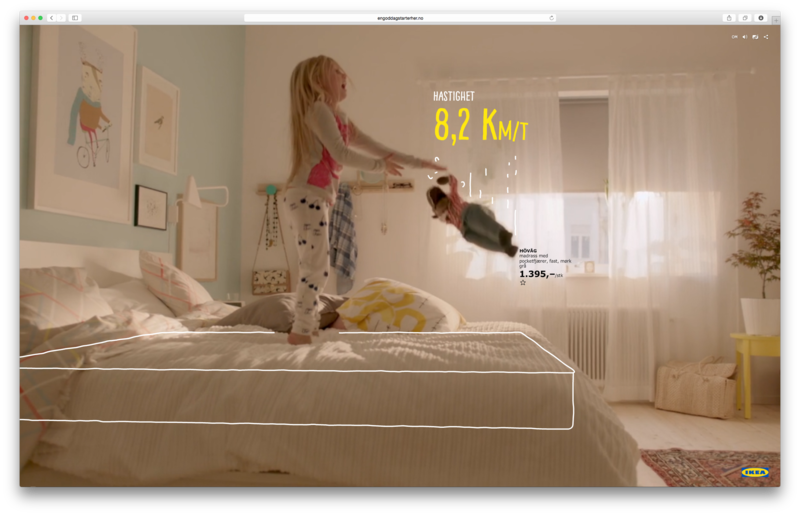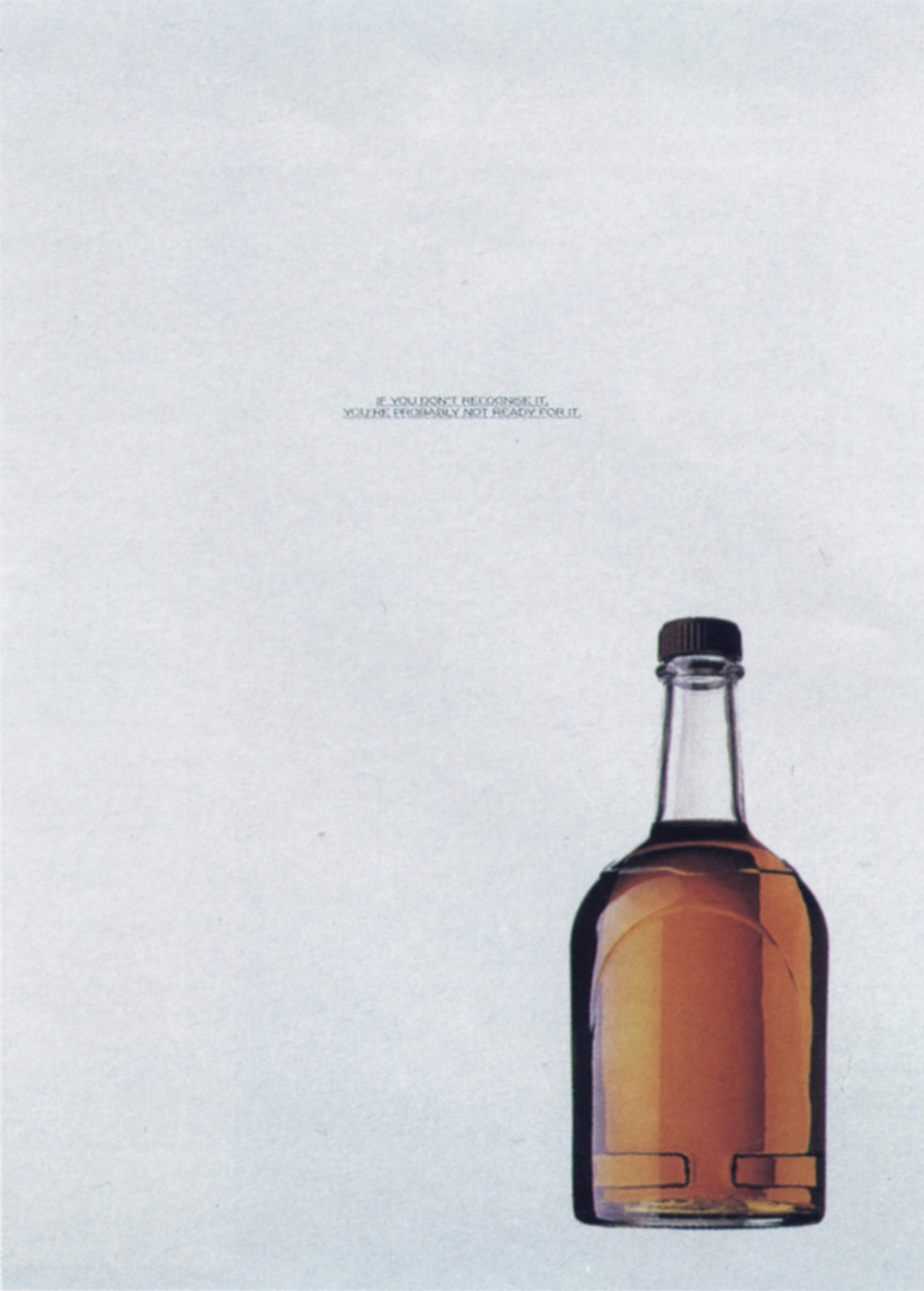Glen Taylor is one of the jurors who selected the work you’re about to see.
To succeed as a digital artist today, you have to be 80% geek.
Glen Taylor is president of Taylor James, initially founded as a photographic retouch studio in 1999 and today one of the premier post-production houses for print, motion and integrated campaigns, based in New York and London, with CGI dominating its direction. Michael Weinzettl spoke to Glen about his career to date and the state of CGI today.
Hello Glen, you founded Taylor James in 1999, when you were just 26. How did that come about?
My very first “TJ” job was an epic scramble. I had just gone out on my own and was working from my girlfriend’s flat when a rushed opportunity arose that I just couldn’t miss. The job was awarded Friday and clients were due Monday to review first-round comments. I had no office or infrastructure. I basically borrowed a friend’s corridor in his Soho design studio and set about on a 72-hour mission: I stripped it, cleaned it, painted it, and filled it full of Ikea furniture. Midnight on Sunday, I moved in my old “Barco” retouch system and then, by 9am Monday, Taylor James was born.
Where had you been working before that and what were these experiences like?
The previous five years I’d been freelancing around London at different shops. I originally studied Graphic Design & Film and never thought I’d end up doing photographic retouching. This was in 1993 at the very start of the digital revolution. All the techniques evolved from traditional photographic darkroom processes. We had very few tools, only masking, stamp, cutting and color correcting. I specialized in landscape photography, producing multi-part compositions; we had to create very methodical and imaginative techniques, almost replicating the old traditional techniques. I eventually became creatively frustrated working on other people’s images. Most evenings and weekends, I’d be shooting my own work and eventually decided to go it alone so I could control my own creative future.
Where did your name come from?
At 26, I was baby-faced but pretty ambitious with a clear vision of where I wanted to go. I felt my young appearance would go against me, so I combined my middle name – “James” – and surname – “Taylor” – to play on people’s perception of a partnership? It definitely helped me in the early days… referring to my ghost partner who handled the business and financial affairs seemed to give people more confidence in me.
Could you tell us a bit about your background? I read you grew up in the country, had a very rural upbringing.
Yep, very rural. Steering tractors, shoveling pig muck and chasing calves all over the countryside. It actually set me up perfectly for the ups and downs of this creative industry.I’m really proud of my working class roots and still escape home to the Essex/Suffolk borders for home-cooked food and a pint in the Three Horseshoes. Nothing brings you back down to earth quite like the mates you’ve known since school.Much of my success today I attribute to my upbringing. I have my dad’s “work ethic” and my mum’s “social skills.” They’ve always been super-supportive and installed a belief to go capture your dreams and never rest on your laurels. This still resonates with me today.
How did your interest in things digital arise ?
As a kid, it was limited to playing Wizball on the Commodore 64. Then, at art college, I become obsessed through designing.
Digital has had a massive impact on our industry, and at TJ we’ve been lucky to ride the front of that wave. Advancements in computers, software, the internet, photography and film – all of that followed and you couldn’t escape it. I think everyone has a natural interest to witness their generation’s technology evolve and to glimpse the future possibilities it creates, at work or at home. It’s always been something we’ve embraced as a business and it’s driven more exciting projects and opportunities for us.
Tell us about some of the changes in CGI that have occurred in the new millennium. There must have been plenty and profound ones – compared to the time when you started out.
We continue to see CGI get better and better in areas that have previously been more complex, like physics-based dynamics, liquids, cloth, particles, destruction, primarily as computers and render farms become faster and more powerful.People accept the worlds created by big VFX movies, memorized by the immersive realism of films like Gravity, which was, in fact, mostly CGI. As those boundaries get pushed, that technology becomes more accessible at the other end of the spectrum, such as product packaging and Ikea catalogues! Ikea really embraced CGI back in 2006 and, now, seventy per cent of their brochure is all CGI! It’s grown to be everywhere and the quality is so good people don’t question it.The future of CGI is massively exciting … we’re trying to predict the trends and offer services that are most relevant. This evolution is driven by the technology and how its creativity is applied. At every opportunity, we’re looking at the way we integrate CGI with all other services – VFX, illustrations, design, 2D, live action, stills productions, etc. Technology underpins much of the creative ideology we see in commercial work today. All helping to make creativity limitless!
What have the changes for Taylor James been like? Did the company grow fast? And how big is it now?
Fifteen years doesn’t feel fast – my gray, receding hairline can vouch for that. The TJ group has grown to 50 talented people working across NYC and London. We’re directing TV commercials, creating complex digital campaigns, and shooting beautiful photography for print ads. From our early days as a retouch company, I’m proud of how far we’ve come.In 2006, ninety per cent of our business was retouching for photographers, and in one year that dropped to fifteen. Finally, I had done what I needed to do and transitioned the business to scratch that creative itch inside of me.I’m an intense perfectionist and probably survived by surrounding myself with the best people. My business partners, Brendan and Siear, share the vision, plus they have the same ambition and drive. Somehow they have stuck with me on this journey and given unconditional support. Love ‘em!
Tell us a bit about the principles with which your company approaches projects.
We approach each project with our eyes and ears open; we poke and prod our client’s initial ideas, learning more about the product or message they’re selling, and building confidence and trust. We then balance our teams to mix the creative visionaries with technical artists. We take projects from concept through to final completion and look to turn every concept into a portfolio-worthy campaign.Productions follow a tight methodology capturing every important little detail. Our staff push themselves creatively and the team respects the vision we push for. I challenge them to search deep and drive themselves forward.With new competition popping up every week, you have to constantly self-analyze. We feel it’s our uncompromising push for excellence that keeps our staff excited, driven, and focused.
Since 2011 you’ve also had a studio in New York. What was behind the decision to open a second base? Do you yourself travel back and forth?
It was a natural progression for us. Fifty per cent of our clients were USA-based and, with increased competition, we needed to build a full production studio in the local market. At the time, we were 45 people in London with an outdated offering and in need of a makeover. So, in 2011, I started traveling Stateside, establishing a sales presence and connecting with the local industry. Brendan started to take over the reins in London and began retargeting and focusing on new clients in the UK and Europe.I was then able to focus on the NYC and USA market. We started with three people, Mark Knowles, our head of CGI, and Jen Allison, an ex-photo agent we brought internal. Now, two years on in NYC, we have 20 full-time staff, occupy a state-of-the-art, 5,0000 sq ft production facility in the Flower district of Manhattan. I even have my own office. More impressive than the growth is the collective strength and multi-skilled diversity of our artists.
What is some of your proudest work created over the past ten years?
I would say the thing I am proudest to have created over the past ten years is the TJ team and the talent pool that exists within it.
In respect of work, it would be the TVC spot for Bermuda Tourism. Both because of its creativity and the challenges we overcame. We produced two 30-second spots, each with one continuous camera move that seamlessly blended CGI visuals of the complete island with live-action vignettes. We had to produce around 50-sec HD footage of fully animated CGI within 12 weeks. I directed the piece, which was shot on Bermuda, with virtually no film production facilities. We had to ship everything in from Miami, NYC, and London, and had a nerve- crunching 50+ crew.It was another example of our can-do attitude and unfaltering thirst for excellence. When I look back, it was a great accomplishment and a milestone in the company’s development. We bit off more than we could chew and didn’t choke. A steep learning curve that highlighted our strengths with team capabilities. It took us to that next step and really sowed the seeds for establishing all the other integrated services we offer today.
In advertising in particular, you hardly get any more images that were not, in some way or other, digitally enhanced. Do you think that, in the future, the borders between photographer and digital artist will completely disappear, at least when it comes to the commercial sector?
Yes, it already has – maybe we just need to coin a new catchphrase for it and all move on. You simply can’t define it as photography or CGI when “content” nowadays is created utilizing a multitude of different disciplines. Unfortunately, the industry is at different stages of acceptance. It makes me think of the bigger understanding, that you simply can’t stop progress.Clients, agencies and production companies are all seeking new ways to restructure how they operate. It’s an exciting time that has been accelerated by the recession of 2008.To us, the message is simple: we have to keep pushing forward and always stay relevant to our clients.
What are some of the latest notable trends in CGI?
The demand for CGI content to be integrated with more of the younger technology platforms. Demand for real-time rendering in things like AR apps, games, Oculus Rift, etc. In other areas it’s stereo photogrammetry and 3D scanning used to create digi-doubles and props. It’s now becoming much more widely available and accessible to smaller businesses beyond just feature film, and it’s really helping us advance our work in terms of realism and accuracy as well as speeding up our modeling processes.The key for us is to work smarter by exploiting the efficiencies technology brings and putting that time back into the creative and the ideas!
What makes a piece of digital art great as opposed to just decent?
That’s subjective but, for me, it’s… when it evokes an emotion, thought, or response on a different level. It can’t just be visually pretty – it has to have more depth, intelligence, humor, be thought-provoking, inspiring, or emotive.
When you work with agency art directors on a certain project, how important are their contributions?
The most important! Massively! We visualize their ideas; without them, we’d be out of work.More than that … our best work is produced as a collaboration with the agency creatives. Our task is to extract, understand, and challenge that vision so that we can take the creative journey together. It’s always more exciting when we are invited into the project at an earlier stage and help sell the creative through to the clients. The production experiences we offer pushes the overall capabilities of the campaign.
Are there any collaborations that you’d be keen on? With photographers or designers? Is there such a thing as your dream collaborator?
The most damaging compromise on any creative quality is time. At this point, a dream collaborator is any client with a deadline that isn’t “yesterday.” I love my football and follow Tottenham Hotspurs. So hearing the news Edgar Davids (ex-Spurs player) has joined Anomaly, NYC. That’s now top of my list!
Of all the major achievements in the field of CGI in general in recent years, which impressed you most?
Bot and Dolly’s work on Gravity, utilizing motion control to capture the space scenes. Those first 17 minutes, watching that film in the IMAX, just blew my mind. The most convincing and immersive camera work I have ever seen.Hollywood has been breaking the boundaries in CGI, year on year. The guiding factor that impresses me most is always photorealism. When it’s combined with emotive storytelling, it restores all my faith in big-screen cinema.
With an image, can there be such a thing as an excessive use of CGI, where there is an over-reliance on the technology involved to create?
No. Photorealism in CGI is here. Therefore, if clients can re-purpose this technology to save time and money over shooting, how can there be an over-reliance? The automotive industry has pushed ahead the advancements in CGI by demand to do just this. Consequently, they save time and money.
What do you look for in young digital artists who might want to work for you?
A brave soul! I think it’s about finding people with a genuine passion for their craft and a desire to continually learn and master the technology that enables their work. Let’s face it: to succeed as a digital artist today, you have to be 80% geek.

















